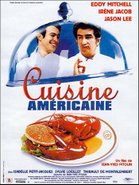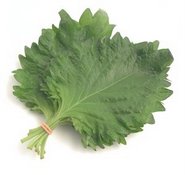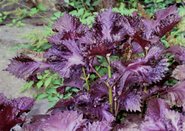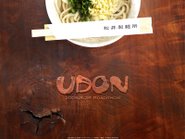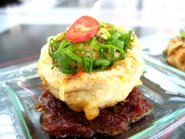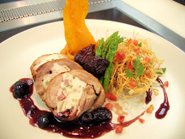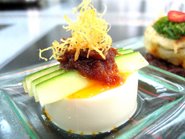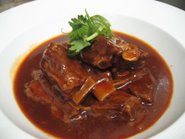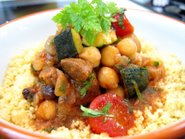 One of the things that everyone must do when in China is to go for a Dim Sum meal. This is especially the more so if u are in the Guangdong (Canton) region where Yum Cha is a part of the dining culture. While no doubt Hong Kong made Dim Sum famous to the rest of the world, there is no deny that Dim Sum originates from the province of Guangdong. Although the variety of Dim Sum seems endless as it is always up to an individual chef’s creativity, the quality can really swing from one end of the scale to the other in various places. Hong Kong made Dim Sum famous to the world because the higher affluence and affordability compared to the rest of Guangdong, demanded Dim Sum to be made with more finesse than quantity. Now with China’s rising affluence especially in all major cities and economic zones, culinary standards are fast catching up yet prices remained much lower than that in Hong Kong. During our last two trips to Shenzhen, we made a few fantastic discoveries on great Dim Sum and were impressed on how standards have improved.
One of the things that everyone must do when in China is to go for a Dim Sum meal. This is especially the more so if u are in the Guangdong (Canton) region where Yum Cha is a part of the dining culture. While no doubt Hong Kong made Dim Sum famous to the rest of the world, there is no deny that Dim Sum originates from the province of Guangdong. Although the variety of Dim Sum seems endless as it is always up to an individual chef’s creativity, the quality can really swing from one end of the scale to the other in various places. Hong Kong made Dim Sum famous to the world because the higher affluence and affordability compared to the rest of Guangdong, demanded Dim Sum to be made with more finesse than quantity. Now with China’s rising affluence especially in all major cities and economic zones, culinary standards are fast catching up yet prices remained much lower than that in Hong Kong. During our last two trips to Shenzhen, we made a few fantastic discoveries on great Dim Sum and were impressed on how standards have improved.

The menu spells the usual items but we also saw dishes that were new to us as they are not seen in our Dim Sum Menus here in Singapore.
 Instead of the usual Cantonese Congees, Mum ordered a Corn Millet Porridge with Sweet Potatoes while I opted for a Red Rice Congee with Pickled Vegetables. My wife N, who is not a congee fan choose to have the Shark’s Fin Dumpling Soup with Whole Scallop. The corn millet porridge is a sweet porridge of blended corn cooked with millet, giving it a nice corn aroma and creamy texture. Interspersed with pieces of sweet potatoes, the porridge has a very calm and soothing effect that gives u a sense of wellness and relaxation.
Instead of the usual Cantonese Congees, Mum ordered a Corn Millet Porridge with Sweet Potatoes while I opted for a Red Rice Congee with Pickled Vegetables. My wife N, who is not a congee fan choose to have the Shark’s Fin Dumpling Soup with Whole Scallop. The corn millet porridge is a sweet porridge of blended corn cooked with millet, giving it a nice corn aroma and creamy texture. Interspersed with pieces of sweet potatoes, the porridge has a very calm and soothing effect that gives u a sense of wellness and relaxation.  My congee was cooked with short grain red rice, giving it a slight starchy texture with toasted
My congee was cooked with short grain red rice, giving it a slight starchy texture with toasted  rice aromas and a nutty texture. Diced pieces of kale provided a contrast of texture and the accompanying pickle vegetables drew out the blandness of the rice, converting it into a platform that allowed the flavours of the pickle to come through with heavenly affinity. For me, eating congee is never complete without Yew Char Kway or deep fried dough crullers so we ordered extras for it. These huge crispy crullers came in a basket and I brief a sigh of relief looking at the clean oil stains on the dolly paper. Chinese kitchens are notorious for the overuse of their oils to deep fry foods without any proper control that sometimes u will find little specks of carbon residue on your deep fried snacks.
rice aromas and a nutty texture. Diced pieces of kale provided a contrast of texture and the accompanying pickle vegetables drew out the blandness of the rice, converting it into a platform that allowed the flavours of the pickle to come through with heavenly affinity. For me, eating congee is never complete without Yew Char Kway or deep fried dough crullers so we ordered extras for it. These huge crispy crullers came in a basket and I brief a sigh of relief looking at the clean oil stains on the dolly paper. Chinese kitchens are notorious for the overuse of their oils to deep fry foods without any proper control that sometimes u will find little specks of carbon residue on your deep fried snacks. Some of my western chef colleagues simply can’t stomach the idea of me being a fan of a dish made with chicken feet. Yes, I am a sucker for “Feng Zhao” or Phoenix Claw as they call it to make it sound better when it comes to dim sum. Interestingly the version here is braised with abalone sauce instead of the usual black bean and chilies combination. The chicken feet here seems to have come from a big footed variety of poultry. They were big, plump and gelatinously tasty. Braised until tender but not to the point of breaking up, there was pretty much to nibble on, extracting every bit of the delicious abalone flavoured sauce that it had soaked up during the slow braising process. Without doubt, it also went very well with my red rice congee.
Some of my western chef colleagues simply can’t stomach the idea of me being a fan of a dish made with chicken feet. Yes, I am a sucker for “Feng Zhao” or Phoenix Claw as they call it to make it sound better when it comes to dim sum. Interestingly the version here is braised with abalone sauce instead of the usual black bean and chilies combination. The chicken feet here seems to have come from a big footed variety of poultry. They were big, plump and gelatinously tasty. Braised until tender but not to the point of breaking up, there was pretty much to nibble on, extracting every bit of the delicious abalone flavoured sauce that it had soaked up during the slow braising process. Without doubt, it also went very well with my red rice congee. N’s sharks fin dumpling was quite generously stuffed that it burst during the steaming of the dumpling in superior broth. When it arrived the little pieces of fins were strewn around the broth with the punctured dumpling skin floating atop on the delicious broth that had turned slightly murky due to the outflow of the stuffing ingredients. Despite the messy appearance, this dish still scored with a rather big fresh whole scallop about the size of a fifty cent coin, being served alongside the dumpling. One bowl wasn’t enough to share so we ended up having to order another which also turned up the same way.
N’s sharks fin dumpling was quite generously stuffed that it burst during the steaming of the dumpling in superior broth. When it arrived the little pieces of fins were strewn around the broth with the punctured dumpling skin floating atop on the delicious broth that had turned slightly murky due to the outflow of the stuffing ingredients. Despite the messy appearance, this dish still scored with a rather big fresh whole scallop about the size of a fifty cent coin, being served alongside the dumpling. One bowl wasn’t enough to share so we ended up having to order another which also turned up the same way. To break the routine, we ordered a platter of Chaozhou style soy braised goose meat instead of the usual Cantonese roasts. Resting on a few slabs of soft textured taukwa that had also been braised in the same sauce, the well braised tender goose meat had been expertly carved into wafer thin slices and drizzled with the marvelous lightly spiced soy braising sauce. This was one of the best soy braised goose that I have ever tasted in the many Chaozhou restaurants that I have visited in past trips to Hong Kong, Macau and Shenzhen.
To break the routine, we ordered a platter of Chaozhou style soy braised goose meat instead of the usual Cantonese roasts. Resting on a few slabs of soft textured taukwa that had also been braised in the same sauce, the well braised tender goose meat had been expertly carved into wafer thin slices and drizzled with the marvelous lightly spiced soy braising sauce. This was one of the best soy braised goose that I have ever tasted in the many Chaozhou restaurants that I have visited in past trips to Hong Kong, Macau and Shenzhen. While we skipped the roast meat platters, we still asked to try their Char Siew Pau or BBQ Pork Buns. Very nice, a lovely hot fluffy steamed dough encrusting chunks of sweet diced BBQ pork cooked in its own drippings. It is as good as the local Crystal Jade’s version, but winning on a merit of a more generous stuffing. For sure this is definitely one of the best Char Siew Pau that we have tasted so far in our trip.
While we skipped the roast meat platters, we still asked to try their Char Siew Pau or BBQ Pork Buns. Very nice, a lovely hot fluffy steamed dough encrusting chunks of sweet diced BBQ pork cooked in its own drippings. It is as good as the local Crystal Jade’s version, but winning on a merit of a more generous stuffing. For sure this is definitely one of the best Char Siew Pau that we have tasted so far in our trip. Cheong Fun or Steamed Rice Flour Rolls are also another staple in all Dim Sum menus. Instead of having it with the usual stuffings like shrimp and char siew, we picked a wok fried version that is tossed with XO sauce. It turned out looking like our pasar malam version of fried carrot cake with sweet black sauce but tasted totally beyond expectation. The first thing to hit our palate was the wok hei, followed on by the savoury notes of soy and XO sauce which must be given due credit. The XO sauce was a house made version and u could see chunky bits of dried scallops and Jin Hua ham speckled on the glistening cheong fun. It is good to know that restaurant take pride to create house versions of key sauces used in their cooking.
Cheong Fun or Steamed Rice Flour Rolls are also another staple in all Dim Sum menus. Instead of having it with the usual stuffings like shrimp and char siew, we picked a wok fried version that is tossed with XO sauce. It turned out looking like our pasar malam version of fried carrot cake with sweet black sauce but tasted totally beyond expectation. The first thing to hit our palate was the wok hei, followed on by the savoury notes of soy and XO sauce which must be given due credit. The XO sauce was a house made version and u could see chunky bits of dried scallops and Jin Hua ham speckled on the glistening cheong fun. It is good to know that restaurant take pride to create house versions of key sauces used in their cooking. Out of curiosity, I ordered a Grilled Bai Ling Mushroom to see how they would cook with it. Bailing mushrooms are huge fan shaped mushrooms with thick meaty caps and an abalone like supple texture. They are the Chinese answer to the western Portobello mushroom, huge palm size fungus that are often sliced across and used for stir fries and steamboats. What I got was a thick slice the size of my palm, drizzled with what I am very sure is, Maggi Liquid Seasoning sauce. That familiar flavour which is what that makes that seasoning sauce stands out is like a huge booster to the mushroom flavour reacting deliciously with it especially on the caramelized edges after grilling, making u salivate on the palate after the first bite.
Out of curiosity, I ordered a Grilled Bai Ling Mushroom to see how they would cook with it. Bailing mushrooms are huge fan shaped mushrooms with thick meaty caps and an abalone like supple texture. They are the Chinese answer to the western Portobello mushroom, huge palm size fungus that are often sliced across and used for stir fries and steamboats. What I got was a thick slice the size of my palm, drizzled with what I am very sure is, Maggi Liquid Seasoning sauce. That familiar flavour which is what that makes that seasoning sauce stands out is like a huge booster to the mushroom flavour reacting deliciously with it especially on the caramelized edges after grilling, making u salivate on the palate after the first bite. To satisfy our taste of at least one fried item, we order a crisp skin deep fried wonton that came with a spicy sweet and sour sauce that reek of ketchup, chilies and some fruity after notes. It brought back memories of the old Mayflower restaurants where deep fried wonton’s was one of their signature dishes. While the stuffing is nothing to shout about, the fun part is to eat the extra wafers of crispy skin with the sweet and sour sauce.
To satisfy our taste of at least one fried item, we order a crisp skin deep fried wonton that came with a spicy sweet and sour sauce that reek of ketchup, chilies and some fruity after notes. It brought back memories of the old Mayflower restaurants where deep fried wonton’s was one of their signature dishes. While the stuffing is nothing to shout about, the fun part is to eat the extra wafers of crispy skin with the sweet and sour sauce. No dim sum meal is really complete without really having either Har Kow (steamed shrimp dumpling) or Siu Mai (Steamed Pork Dumpling with Roe Topping) or both. To most culinary aficionados, these two items are often represented as a benchmark indication to the overall standard of the dim sum menu. Hence if they are not done well, the rest of the items need not have to talk about anymore. We chose to try their Har Kow which came in the size of a ping pong ball. Not because of the thick pastry skin thankfully, but due to the generous filling of whole shrimp pieces encased in a very thin layer of almost transparent dumpling skin that allows us to peek at the contents without biting into it. As expected, the prawns had also gone through their ritual extended shower of running tap water that gives them their crunchy texture on bite.
No dim sum meal is really complete without really having either Har Kow (steamed shrimp dumpling) or Siu Mai (Steamed Pork Dumpling with Roe Topping) or both. To most culinary aficionados, these two items are often represented as a benchmark indication to the overall standard of the dim sum menu. Hence if they are not done well, the rest of the items need not have to talk about anymore. We chose to try their Har Kow which came in the size of a ping pong ball. Not because of the thick pastry skin thankfully, but due to the generous filling of whole shrimp pieces encased in a very thin layer of almost transparent dumpling skin that allows us to peek at the contents without biting into it. As expected, the prawns had also gone through their ritual extended shower of running tap water that gives them their crunchy texture on bite. One interesting thing we noted was people here also have a taste for durian, but more accurately, a taste for cooked durian.
One interesting thing we noted was people here also have a taste for durian, but more accurately, a taste for cooked durian.  While they do not enjoy the varieties we have here, they are still able to get the Thai variety of Monthong durian. Most of them use it to make it into a stuffing for a flaky pastry turnover. Though they are not as good as Malaysian durians, they still make a good filling for these little dim sums giving them the necessary identity as a Durian in Flaky Pastry or “Lau Lin Sou” in Cantonese. For desserts, Mum had a simple green bean soup which was boiled with some seaweed, similar to wakame.
While they do not enjoy the varieties we have here, they are still able to get the Thai variety of Monthong durian. Most of them use it to make it into a stuffing for a flaky pastry turnover. Though they are not as good as Malaysian durians, they still make a good filling for these little dim sums giving them the necessary identity as a Durian in Flaky Pastry or “Lau Lin Sou” in Cantonese. For desserts, Mum had a simple green bean soup which was boiled with some seaweed, similar to wakame. This gave the soup a sweet salty character that makes u think of the tau sar piah filling from the pastry shops along Balestier Road. Nonetheless, it is for nutritional and functional purposes that this simple sweet soup is served as part of their menu. My wife opted for a glass of ginger infused steam milk which was a white version of Teh Halia. My steamed milk in coconut was more interesting where the slightly curdled milk went very well with the scrapings of the young coconut flesh, complimenting each other with creamy dimensions and alternative textures of soft and springiness.
This gave the soup a sweet salty character that makes u think of the tau sar piah filling from the pastry shops along Balestier Road. Nonetheless, it is for nutritional and functional purposes that this simple sweet soup is served as part of their menu. My wife opted for a glass of ginger infused steam milk which was a white version of Teh Halia. My steamed milk in coconut was more interesting where the slightly curdled milk went very well with the scrapings of the young coconut flesh, complimenting each other with creamy dimensions and alternative textures of soft and springiness.Laurel by far has become a regular on our radar each time we come over to Shenzhen and this restaurant group has two other outlets with their flagship at the LuoHu Commercial Center, next to the HK-Shenzhen border.


 We started with a chilled appetizer of shark lips and black fungus which are contrasting textures of crunchy wood ears and supple strips of shark lips which tasted like “compressed” konnyaku sheets. Toss with salt and sesame oil with lots of fresh coriander and spring onions, the flavours were clean and simple, crunchy and refreshing.
We started with a chilled appetizer of shark lips and black fungus which are contrasting textures of crunchy wood ears and supple strips of shark lips which tasted like “compressed” konnyaku sheets. Toss with salt and sesame oil with lots of fresh coriander and spring onions, the flavours were clean and simple, crunchy and refreshing. Next came a platter of five pieces of finely rolled Warm Radish Pastry. It should be named Hot instead as the generous filling of green and white radishes were piping hot and spilling out of the delicate flaky pastry as we bit into each piece. Washed down with a delicate brew of Long Jing Tea, this was a great tummy warmer for the main dishes to come.
Next came a platter of five pieces of finely rolled Warm Radish Pastry. It should be named Hot instead as the generous filling of green and white radishes were piping hot and spilling out of the delicate flaky pastry as we bit into each piece. Washed down with a delicate brew of Long Jing Tea, this was a great tummy warmer for the main dishes to come.

 We expected our cuttlefish to arrive in pre filleted slices but it came like a stir fry instead of grilled as mentioned in the menu. The sauce was spicy with fermented chilies but yet delicious with aromas of Shaoxing wine. After picking the first few pieces, we realized that they gave us more heads of the calamari than the succulent body so after the first piece each, we started to get bored with it and picked on the accompany veggies instead. The onions had soaked up much of the delicious sauce eating them was more of a pleasure than the calamari itself.
We expected our cuttlefish to arrive in pre filleted slices but it came like a stir fry instead of grilled as mentioned in the menu. The sauce was spicy with fermented chilies but yet delicious with aromas of Shaoxing wine. After picking the first few pieces, we realized that they gave us more heads of the calamari than the succulent body so after the first piece each, we started to get bored with it and picked on the accompany veggies instead. The onions had soaked up much of the delicious sauce eating them was more of a pleasure than the calamari itself. For greens, we chose to have Winter Melon Braised with Jin Hua Ham in Broth. The flavourful ham lends its delicious aromas to the bland melon strips and perfumes the essence of the broth with a savoury umami taste. A strong affinity for each other, there isn’t really a need to have anything else in the dish to make the taste more naturally good than it already is.
For greens, we chose to have Winter Melon Braised with Jin Hua Ham in Broth. The flavourful ham lends its delicious aromas to the bland melon strips and perfumes the essence of the broth with a savoury umami taste. A strong affinity for each other, there isn’t really a need to have anything else in the dish to make the taste more naturally good than it already is. A simple dish is also one of the easiest to make mistakes as many cooks take the simplicity of preparation for granted. Hence sometimes its worth to order simple dishes that says a lot about the chef that cooks it. Our simple dish is a Fried Rice with Egg White and Spring Onion. The bench marks are on the fluffiness of the rice grains, level of greasiness, wok fragrance and eggy afternotes.
A simple dish is also one of the easiest to make mistakes as many cooks take the simplicity of preparation for granted. Hence sometimes its worth to order simple dishes that says a lot about the chef that cooks it. Our simple dish is a Fried Rice with Egg White and Spring Onion. The bench marks are on the fluffiness of the rice grains, level of greasiness, wok fragrance and eggy afternotes. 
 What caught our eyes for the chill element was an interesting Chilled Pumpkin Puree in Egg shell with Taro Cubes. The egg shells were filled with a creamy sweetened puree of sweet pumpkin with topped with egg yolk slices. The entire row was flanked with lilies as both dessert and flower sit on a nice wooden box filled with a nicely carved egg tray.
What caught our eyes for the chill element was an interesting Chilled Pumpkin Puree in Egg shell with Taro Cubes. The egg shells were filled with a creamy sweetened puree of sweet pumpkin with topped with egg yolk slices. The entire row was flanked with lilies as both dessert and flower sit on a nice wooden box filled with a nicely carved egg tray.

 N and I took a day trip down to HK during the week we were in Shenzhen to explore the former British colony’s most happening dinning concepts and places. I was told that the Aqua Group had some pretty decent new ideas in the last two years and friends who have visited their interesting concepts have came back raving about the food and theme. So for the trip to be worthwhile, wbooked two of their restaurants for lunch and dinner.
N and I took a day trip down to HK during the week we were in Shenzhen to explore the former British colony’s most happening dinning concepts and places. I was told that the Aqua Group had some pretty decent new ideas in the last two years and friends who have visited their interesting concepts have came back raving about the food and theme. So for the trip to be worthwhile, wbooked two of their restaurants for lunch and dinner.



 We started with a radish roll that was stuffed with a whole lump of crab meat from the pincers. The entire roll was livened up with a dash of fiery piquant chili oil that was itself counter balanced with the sweetness of radish and crabmeat. A great compliment with each other in taste but I have appreciated it more if the chef had been more generous with the crabmeat. On a hot day, this was a refreshing appetizer the not also taste good but also quenches the palate.
We started with a radish roll that was stuffed with a whole lump of crab meat from the pincers. The entire roll was livened up with a dash of fiery piquant chili oil that was itself counter balanced with the sweetness of radish and crabmeat. A great compliment with each other in taste but I have appreciated it more if the chef had been more generous with the crabmeat. On a hot day, this was a refreshing appetizer the not also taste good but also quenches the palate. Another thirst quencher appetizer was the Chilled Scallops with Pomelo Pulp. Lightly poached chilled scallops form the perimeter of a mound of handpicked pomelo pulp that had been meticulously separated into individual sacs. Emphasizing on natural tastes, the sweet creamy scallops were contrasted with little sacs of pomelo pulp that burst on the palate releasing little droplets of tangy citrus juices that embraced the delicate sweetness of the shellfish with natural affinity. Simple but sophisticated.
Another thirst quencher appetizer was the Chilled Scallops with Pomelo Pulp. Lightly poached chilled scallops form the perimeter of a mound of handpicked pomelo pulp that had been meticulously separated into individual sacs. Emphasizing on natural tastes, the sweet creamy scallops were contrasted with little sacs of pomelo pulp that burst on the palate releasing little droplets of tangy citrus juices that embraced the delicate sweetness of the shellfish with natural affinity. Simple but sophisticated. The aromas of a Shandong flavoured pork rib arrived before the actual master piece where we picked up whiffs of cumin and fennel. The ribs that have been slow roasted were coated with a dry rub of whole spices that shared their individual characteristic aromas in friendly harmony as to bring out the best of each piece of meaty rib. The ribs were well marbled with the right amount of fat in between and were cooked to enough tenderness that enable the meat to slide off the bone easily and each fragrant morsel reminded me of satay that we have back at home.
The aromas of a Shandong flavoured pork rib arrived before the actual master piece where we picked up whiffs of cumin and fennel. The ribs that have been slow roasted were coated with a dry rub of whole spices that shared their individual characteristic aromas in friendly harmony as to bring out the best of each piece of meaty rib. The ribs were well marbled with the right amount of fat in between and were cooked to enough tenderness that enable the meat to slide off the bone easily and each fragrant morsel reminded me of satay that we have back at home. Given the issue of salted egg yolks being ban periodically recently in Singapore, we took the opportunity to savour it with some fresh king prawns, The serving was pretty generous and the sauce was no doubt rich with the combination of yolk and margarine. It coated the large and plump looking prawn very well, but the prawn itself was a let down on being too overcooked. Hence they were more chewy than crunchy. If it was any consolation, at least the prawns were not subjected to the typical Chinese restaurant’s treatment of running the de-shelled prawns under running water to artificially make them crunchier without any nutritional value.
Given the issue of salted egg yolks being ban periodically recently in Singapore, we took the opportunity to savour it with some fresh king prawns, The serving was pretty generous and the sauce was no doubt rich with the combination of yolk and margarine. It coated the large and plump looking prawn very well, but the prawn itself was a let down on being too overcooked. Hence they were more chewy than crunchy. If it was any consolation, at least the prawns were not subjected to the typical Chinese restaurant’s treatment of running the de-shelled prawns under running water to artificially make them crunchier without any nutritional value. One of Hong Kong’s most famous methods of cooking is to have seafood or meat cooked Pik Fong Tong (wind shelter) Style which is a mixture of crispy garlic, bean crumbs and dried chilies sprinkled over sautéed or deep fried seafood. This dish was created by a master chef in one of the kitchens of the famous Aberdeen floating restaurants that happened to be situated in a coastal shelter for Hong Kongs boat dwellers whenever a typhoon alert was raised. Hence it was adeptly named Pik Fong Tong. This was also how our fish dish was served. An entire garoupa had been filleted and reconstituted back to shape after cooking, sprinkled on generously with the above mentioned crispy topping. If u like Singapore style cereal prawns, u will take to this dish as a merit of Cantonese cooking.
One of Hong Kong’s most famous methods of cooking is to have seafood or meat cooked Pik Fong Tong (wind shelter) Style which is a mixture of crispy garlic, bean crumbs and dried chilies sprinkled over sautéed or deep fried seafood. This dish was created by a master chef in one of the kitchens of the famous Aberdeen floating restaurants that happened to be situated in a coastal shelter for Hong Kongs boat dwellers whenever a typhoon alert was raised. Hence it was adeptly named Pik Fong Tong. This was also how our fish dish was served. An entire garoupa had been filleted and reconstituted back to shape after cooking, sprinkled on generously with the above mentioned crispy topping. If u like Singapore style cereal prawns, u will take to this dish as a merit of Cantonese cooking. To round off the meal, we asked for a basket of steamed twirled mantous (buns) specked with Jinhua Ham and spring onions. The fluffy buns is the best representation of the dough eating culture of Chinese cuisine in a steamed way.
To round off the meal, we asked for a basket of steamed twirled mantous (buns) specked with Jinhua Ham and spring onions. The fluffy buns is the best representation of the dough eating culture of Chinese cuisine in a steamed way. Dessert was huge platter decked with toasted coconut shavings, coconut ice cream and compote of chilled snow pears and white fungus. Given the unusual combination, I found it easier to have just the ice cream with the toasted coconut flakes to avoid a taste confusion on the palate before moving on to the chilled pears and white fungus.
Dessert was huge platter decked with toasted coconut shavings, coconut ice cream and compote of chilled snow pears and white fungus. Given the unusual combination, I found it easier to have just the ice cream with the toasted coconut flakes to avoid a taste confusion on the palate before moving on to the chilled pears and white fungus.


 The above restaurant is a well known place for abalone and sharks fin. It caters to mainly to business clients and top bureaucrats of the provincial government. It has two floors of private dining rooms and another floor for the main dining hall. With multiple accolades and many awards of excellence for its culinary skills, the kitchen has more than 100 cooks and chefs and just for ushering guests, there were at least 15-20 ladies in attendance. This is the typical restaurant scene in Shenzhen, Guangdong, China. It makes our local Chinese restaurants look really dwarf in size. Anyway we were here at the invitation of the boss not for the high end stuff, but authentic flavours of our home town Shantou, featuring its produces and dishes that are not available in Singapore.
The above restaurant is a well known place for abalone and sharks fin. It caters to mainly to business clients and top bureaucrats of the provincial government. It has two floors of private dining rooms and another floor for the main dining hall. With multiple accolades and many awards of excellence for its culinary skills, the kitchen has more than 100 cooks and chefs and just for ushering guests, there were at least 15-20 ladies in attendance. This is the typical restaurant scene in Shenzhen, Guangdong, China. It makes our local Chinese restaurants look really dwarf in size. Anyway we were here at the invitation of the boss not for the high end stuff, but authentic flavours of our home town Shantou, featuring its produces and dishes that are not available in Singapore. It was our first private dinner in a private dining room twice the size of an average 5room HDB sitting room that comes with a full audio video entertainment system. Oh yes, it also came with a private chef in attendance. Our host was the owner of this newly opened restaurant and a connoisseur for gourmet Chinese cuisine with a refined palate. We share the same dialect group and ancestral home town so this was an opportunity to taste some traditional Chaozhou recipes that we do not get to see in Singapore. Food was simple, light and the focus on ingredients grown organically and harvested in Shantou area.
It was our first private dinner in a private dining room twice the size of an average 5room HDB sitting room that comes with a full audio video entertainment system. Oh yes, it also came with a private chef in attendance. Our host was the owner of this newly opened restaurant and a connoisseur for gourmet Chinese cuisine with a refined palate. We share the same dialect group and ancestral home town so this was an opportunity to taste some traditional Chaozhou recipes that we do not get to see in Singapore. Food was simple, light and the focus on ingredients grown organically and harvested in Shantou area. Using small bay shrimps harvested from the coastal regions of Shantou, the shrimps were salted and left to ferment for three days before being coarsely grounded. It is then slow cooked in oil like a confit with raw sugar and spices like garlic to a delicious savoury mix similar to XO sauce. A small amount of fragrant chopped spring onions is then added to balance the fermented delicious pungent aromas of the sauce. It can be used similar to XO sauce applications and one of the best combinations I have ever tried out was to pair it with sashimi grade salmon belly on a previous trip here last year.
Using small bay shrimps harvested from the coastal regions of Shantou, the shrimps were salted and left to ferment for three days before being coarsely grounded. It is then slow cooked in oil like a confit with raw sugar and spices like garlic to a delicious savoury mix similar to XO sauce. A small amount of fragrant chopped spring onions is then added to balance the fermented delicious pungent aromas of the sauce. It can be used similar to XO sauce applications and one of the best combinations I have ever tried out was to pair it with sashimi grade salmon belly on a previous trip here last year. Shantou is the province in China that is blessed with the longest coast line and hence the abundance of seafood in all kinds. A specialty of Chaozhou cuisine is the making of springy balls with different kind of seafood from fish to prawns and cuttlefish. Using a traditional recipe passed down from his dad, our host had taught his personal chef the artisan method of hand making cuttlefish balls without the aid of starch and modern machinery. These lovely springy cuttlefish balls were served with organically grown autumn squash harvested from the roof top garden of our host’s penthouse unit in a superior broth made with long hours of simmering an old mother hen and dried scallops.
Shantou is the province in China that is blessed with the longest coast line and hence the abundance of seafood in all kinds. A specialty of Chaozhou cuisine is the making of springy balls with different kind of seafood from fish to prawns and cuttlefish. Using a traditional recipe passed down from his dad, our host had taught his personal chef the artisan method of hand making cuttlefish balls without the aid of starch and modern machinery. These lovely springy cuttlefish balls were served with organically grown autumn squash harvested from the roof top garden of our host’s penthouse unit in a superior broth made with long hours of simmering an old mother hen and dried scallops. Fresh young tender bamboo shoots from Shantou were the focus in this dish and not the pigeon as thought. Relatively hard to find in Singapore (we get only fresh matured bamboo shoots from Thailand), these shoots were stewed with pigeon till the sauce became a rich gelatinous milky texture with a slight gamey after notes. Mushrooms were added for umami dimensions and old ginger was used to calm the gamey notes of the stew. My wife N, who loved bamboo shoots as the only vegetable in her life left me only with the simmered bits of the bird after polishing off the crunchy flavourful shoots and mushrooms.
Fresh young tender bamboo shoots from Shantou were the focus in this dish and not the pigeon as thought. Relatively hard to find in Singapore (we get only fresh matured bamboo shoots from Thailand), these shoots were stewed with pigeon till the sauce became a rich gelatinous milky texture with a slight gamey after notes. Mushrooms were added for umami dimensions and old ginger was used to calm the gamey notes of the stew. My wife N, who loved bamboo shoots as the only vegetable in her life left me only with the simmered bits of the bird after polishing off the crunchy flavourful shoots and mushrooms. Utilising the above mentioned sauce, fresh daikon were cut into cubes and simmered in chicken stock till tender. They were then drained with chopped spring onions added into. The mixture was then bind with a sweet potato starch (the kind that they used for oyster omelette or or luak as it is commonly known in Teochew) from our home town, shaped into patties and lightly pan fried. These little daikon cake are then appreciated with a little topping of the fermented shrimp confit, giving it a touch of savoury elegance and a delicious salty fragrance note of fermented pungency.
Utilising the above mentioned sauce, fresh daikon were cut into cubes and simmered in chicken stock till tender. They were then drained with chopped spring onions added into. The mixture was then bind with a sweet potato starch (the kind that they used for oyster omelette or or luak as it is commonly known in Teochew) from our home town, shaped into patties and lightly pan fried. These little daikon cake are then appreciated with a little topping of the fermented shrimp confit, giving it a touch of savoury elegance and a delicious salty fragrance note of fermented pungency. This was Mum’s favourite dish as it reminds her of her childhood. The coastal sole (Leng Ji as it is known in the dialect) is a favourite fish for steaming due to its ideal size, fine textured flesh with a delicate sweetness. We like the delicious soy broth with a touch of dried orange peel that bathe over the beautifully steamed fish and the colourful topping of wood ears, red dates, fresh coriander leaves and mushrooms.
This was Mum’s favourite dish as it reminds her of her childhood. The coastal sole (Leng Ji as it is known in the dialect) is a favourite fish for steaming due to its ideal size, fine textured flesh with a delicate sweetness. We like the delicious soy broth with a touch of dried orange peel that bathe over the beautifully steamed fish and the colourful topping of wood ears, red dates, fresh coriander leaves and mushrooms. I was told that beancurd in China is still very much produced in traditional ways and the stone grinds are still available for sale even in the most modern Chinese cities. I guess making beancurd for the Chinese is like making cheese for the French. The more artisan (read: backyard production in limited quantities), the better it is. How true it was when I tasted the first bite of this dish. The tofu (taukwa) was very flavourful and the intense soybean flavour can only be achieved with handmade tofu and not via machine process. It tasted very much like vegetarian chicken (if u have eaten in any Buddhist monastery, u will know what I mean) which is actually layers of soybean skin compressed together. This is not something that u can find in Singapore. The radish essence provide a nice back drop for the tofu and supported the taste of the dish with a earthy note of humility.
I was told that beancurd in China is still very much produced in traditional ways and the stone grinds are still available for sale even in the most modern Chinese cities. I guess making beancurd for the Chinese is like making cheese for the French. The more artisan (read: backyard production in limited quantities), the better it is. How true it was when I tasted the first bite of this dish. The tofu (taukwa) was very flavourful and the intense soybean flavour can only be achieved with handmade tofu and not via machine process. It tasted very much like vegetarian chicken (if u have eaten in any Buddhist monastery, u will know what I mean) which is actually layers of soybean skin compressed together. This is not something that u can find in Singapore. The radish essence provide a nice back drop for the tofu and supported the taste of the dish with a earthy note of humility. The Chinese version of an asparagus quiche, diced young asparagus were binded by potato starch, interspersed with shrimps giving it an extra dimension of umami sweetness. It is then pan fried till a crispy layer is form and the entire pie is set before being cut up into serving pieces. Thought I like this version of the asparagus pie, I was secretly fantasising what would the effect be if some diced Jinhua Ham was added to the batter mix? This would certainly notch up the overall taste of the dish by another level. I should try this on my own sometime soon!
The Chinese version of an asparagus quiche, diced young asparagus were binded by potato starch, interspersed with shrimps giving it an extra dimension of umami sweetness. It is then pan fried till a crispy layer is form and the entire pie is set before being cut up into serving pieces. Thought I like this version of the asparagus pie, I was secretly fantasising what would the effect be if some diced Jinhua Ham was added to the batter mix? This would certainly notch up the overall taste of the dish by another level. I should try this on my own sometime soon! Another dish showcasing the flavour and sweetness of cabbages harvested from Shantou. Braised with a meaty chicken consommé made with boiler fowl, the noodles absorb the sweetness of the vegetables through the stock and it was very flavourful despite the absence of any fancy ingredients or meat. The mung bean noodles were also very smooth and a little springy, pretty much like Korea’s Jap Chae. I could finish two bowls of noodles with battling and eyelid!
Another dish showcasing the flavour and sweetness of cabbages harvested from Shantou. Braised with a meaty chicken consommé made with boiler fowl, the noodles absorb the sweetness of the vegetables through the stock and it was very flavourful despite the absence of any fancy ingredients or meat. The mung bean noodles were also very smooth and a little springy, pretty much like Korea’s Jap Chae. I could finish two bowls of noodles with battling and eyelid! A much healthier version than oyster omelette, the autumn squashes were pre blanched and added to a batter of sweet potato flour with some rice starch. Fried only with shrimps, egg white and a touch of Chaozhou fish sauce, this dish is a new discovery for me and it seems that locally here in Singapore, we might just be able to reproduce this with angled lufa (Kak Kuay in Teochew).
A much healthier version than oyster omelette, the autumn squashes were pre blanched and added to a batter of sweet potato flour with some rice starch. Fried only with shrimps, egg white and a touch of Chaozhou fish sauce, this dish is a new discovery for me and it seems that locally here in Singapore, we might just be able to reproduce this with angled lufa (Kak Kuay in Teochew). Lovely tender shoots of handpicked young sweet potato leaves no more than 5cm in length, they were quickly wilted in a hot wok with oil and garlic, refreshed with chicken stock that imparted flavour to the leaves and at the same time removing any excess oil. The result was a lovely mould of wok flavour sweet potato leaves that blew me off when paired with the fermented shrimp confit.
Lovely tender shoots of handpicked young sweet potato leaves no more than 5cm in length, they were quickly wilted in a hot wok with oil and garlic, refreshed with chicken stock that imparted flavour to the leaves and at the same time removing any excess oil. The result was a lovely mould of wok flavour sweet potato leaves that blew me off when paired with the fermented shrimp confit.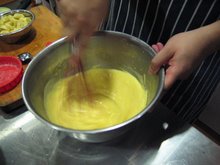

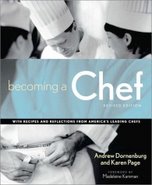
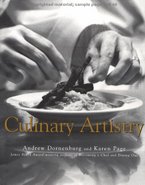





.jpg)
